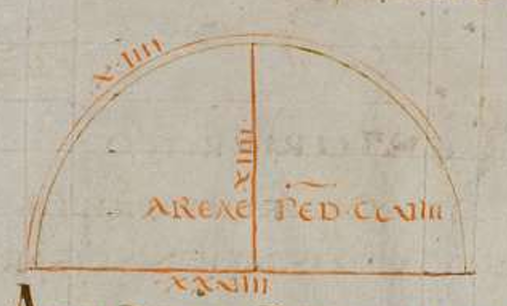
About
For an accessible overview of the subject of Roman practical mathematics and the Agrimensores and Roman Mathematics (AgRoMa) project, see Newcastle University’s FROM blog
The AgRoMa project aims to transform our understanding of the intellectual world of Greco-Roman antiquity and mathematical accomplishments of the Romans by establishing a new textual basis and contextual framework for the study of the overlooked Roman mathematical tradition, producing the first complete critical edition, translation, and commentary of the collections of practical mathematical problems preserved among the treatises of the Roman land surveyors (agrimensores).
Practical mathematics is a key area of ancient science, but the history of this tradition in the Latin-speaking Roman world has been largely ignored. In many respects, the Romans have never really lived down their most (in)famous mathematical feat: the murder of one of the greatest mathematicians of all time — Archimedes — during the siege of Syracuse in 212 BC. This image has long coloured perceptions of Rome’s relationship with mathematics: brutal indifference.
However, a rich repository of Roman mathematical problems survives among the late-antique collections of Roman surveyors’ manuals, collectively known as the Corpus Agrimensorum Romanorum. The texts gathered by the surveyors are fundamental to our understanding of Roman civilization, from land-use and bureaucracy to law and colonisation, but the practical mathematical tradition of the Romans has been overlooked by classicists and historians of science because existing editions of the Corpus Agrimensorum Romanorum omit this material, thus obscuring the true character of the Corpus and its significance for the history of the exact sciences. These Roman problem collections demonstrate that the intellectual horizons of the Roman land surveyors (agrimensores) stretched beyond practical mensuration, encompassing a sophisticated, integrative concept of mathematics that embraced both geometry and arithmetic. The mathematical texts preserved in the Corpus Agrimensorum Romanorum show how these agents of empire cultivated mathematical knowledge as an intellectual exercise and marker of professional status, engaging creatively with Greek mathematics to create an independent tradition grounded in their own socio-cultural reality.
New work on ancient practical mathematics, currently dominated by Greek perspectives, makes a reassessment of the Roman tradition particularly pressing. AgRoMa provides the necessary compliment to these studies by making the full range of evidence for the surveyors’ mathematical education and interests available for the first time. The commentary accompanying AgRoMa’s critical edition will chart how a group of sub-elite practitioners creatively re-fashioned the literary and structural forms of their Greek mathematical sources to forge a specialised vocabulary, new modes of exposition, and new problems based on Roman units of measurement. AgRoMa thus aims to re-define the scientific significance of the Corpus Agrimensorum Romanorum and transform our understanding of practical mathematics in the Greco-Roman world.
AgRoMa will result in a major published edition and develop activities to support cross-curricular teaching of the UK National Curriculum’s KS2 History and Mathematics programmes. The project will also produce online resources to support teaching and future research, and new fonts for the correct display of Roman mathematical symbols.